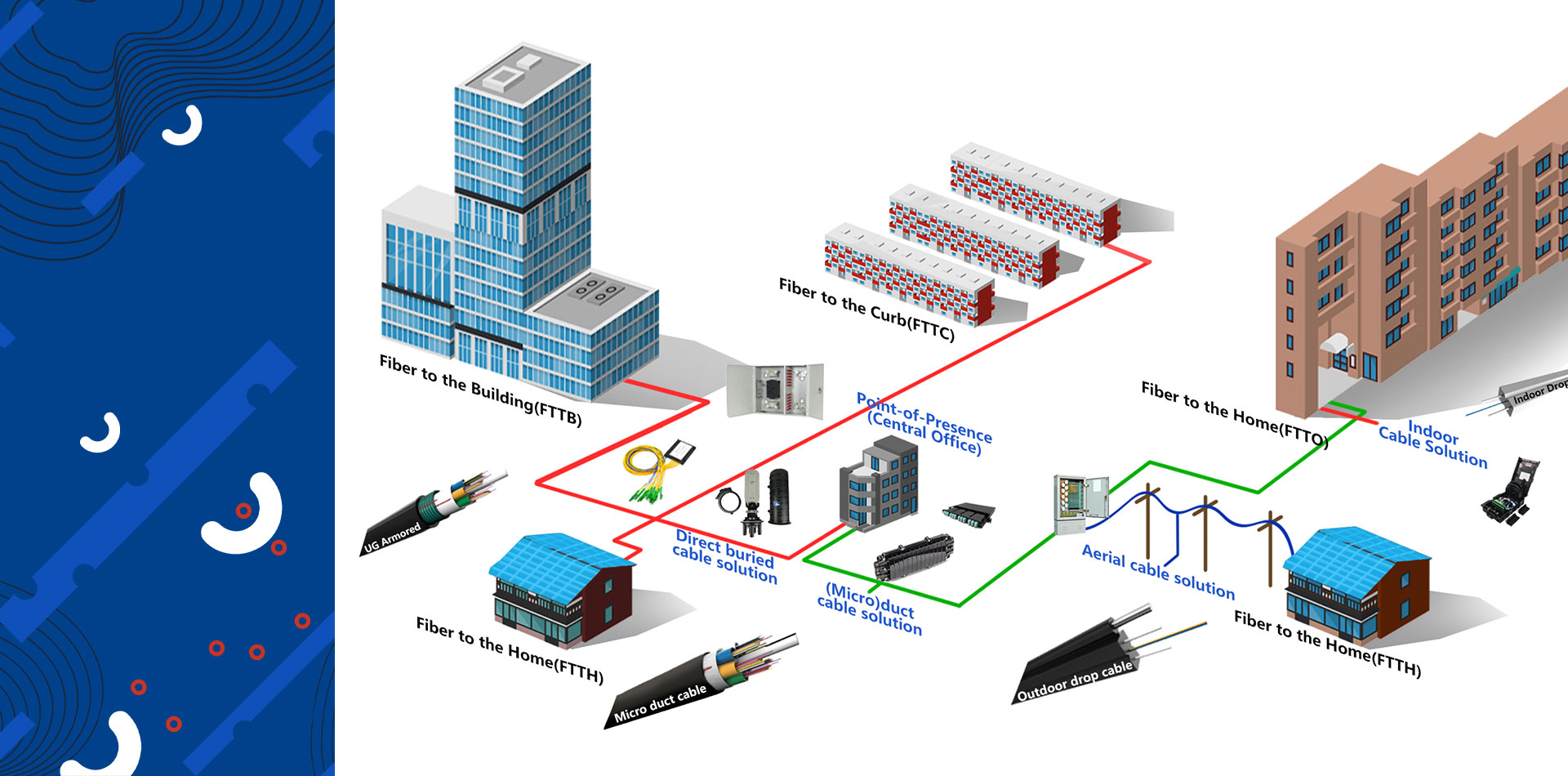Fiber optic cables are designed to be flexible through a combination of materials and construction techniques that allow them to bend without breaking or damaging the core fibers. Several factors contribute to the flexibility of fiber optic cables:
1. Strength Members (Flexible Design):
Aramid fibers (Kevlar): These strong, lightweight materials are often used as strength members in fiber optic cables. While they provide strength and prevent stretching, they are also flexible enough to allow the cable to bend without breaking. Kevlar helps protect the delicate fibers inside the cable from tension and pressure.
Central Strengthening Elements: Some cables use steel wires or fiberglass rods in the core for added protection and flexibility. These elements give the cable its structure while maintaining some level of bendability.
2. Loose Tube Construction:
Many fiber optic cables use a loose tube construction, where the optical fibers are not tightly bound to the outer sheath but are instead placed loosely in tubes. This allows for greater flexibility since the fibers can move slightly within the tube, absorbing stress without cracking or breaking.
3. Coatings and Sheaths:
Buffer Coats and Protective Jackets: The individual fibers are coated with materials such as acrylate or other plastic polymers, which provide cushioning and allow some degree of flexibility. The outer jacket of the cable, often made of low-density polyethylene (LDPE) or other flexible polymers, also provides flexibility while protecting the fibers from environmental factors.
4. Bend Insensitive Design:
Some fiber optic cables are specifically designed with bend-insensitive fibers. These fibers have a special structure in the cladding, allowing them to maintain signal integrity even when bent sharply. The bend-insensitive design prevents excessive light loss and ensures the cable performs well even under tight bend conditions.
5. Outer Jacket Materials:
The outer jacket or sheath of the fiber optic cable can also play a role in flexibility. Materials like thermoplastic elastomers (TPE) or thermoplastic polyurethane (TPU) provide flexibility and durability, allowing the cable to bend without significant damage.
6. Tight and Loose Buffer Cable Types:
Tight-Buffered Cables: These cables have a more rigid outer layer around each individual fiber, making them more durable but less flexible.
Loose-Buffered Cables: As mentioned, these have more room for the fiber inside a larger tube, allowing more flexibility and are better suited for long-distance installations or areas requiring more movement.
Overall, the combination of strength members, coatings, and the specific design of the fibers and cables makes fiber optic cables flexible. Would you like to know more about how to choose flexible fiber optic cables for specific applications? Contact China Leading fiber optic cable manufacturer for help – Huan Jiahome
Post time: Feb-21-2025

